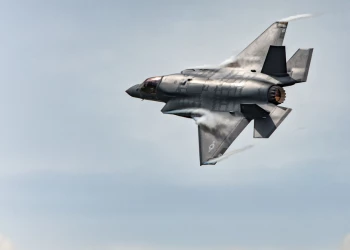Defense News Digest: June 2025
Add bookmark
Welcome to IDGA’s weekly news roundup. For over two decades, IDGA has organized conferences designed to further the national security objectives of the current administration and to facilitate the acquisition priorities of the DoD, DHS, and other federal agencies. Now, through this weekly series, we look to educate the community on the latest research, program updates and news in the defense and government sector.
This month we will examine four stories, some of which you might have missed, including the Pentagon’s budget request, the potential return of an Air Force hypersonics program, and more.
Pentagon Unveils $961.6B FY2026 Budget with Reconciliation Push
The Pentagon has officially released its FY2026 budget request totaling $961.6 billion—marking a record defense investment. The plan depends heavily on $113.3 billion from a proposed $150 billion national security reconciliation bill. Without it, the Department has not shared contingency plans.
Priorities include deterring China, securing the homeland, revitalizing the defense industrial base, and promoting fiscal responsibility. Notably, no five-year spending plan was provided, leaving future funding for major programs uncertain.
The Pentagon is requesting the Army receive $197.4 billion, the Navy $292.2 billion, the Air Force and Space Force $301.1 billion, and defense-wide activities $170.9 billion. Major spending areas include $205 billion for procurement, $184 billion for military personnel, $107 billion for operations and maintenance, $1.2 billion for research and development, and $19.8 billion for military construction.
Among key programs, the Pentagon plans to reduce F-35 procurement to 47 jets, including just 24 for the Air Force. The Air Force’s next-generation F-47 fighter receives $3.4 billion, reflecting its status as a top modernization priority. The Navy’s F/A-XX program is effectively delayed, with only $74 million requested for design work. Shipbuilding plans, including two Virginia-class submarines and two Arleigh Burke-class destroyers, will rely on reconciliation funds.
The budget also confirms the cancellation of several Army programs, including the M10 Booker, Robotic Combat Vehicle, Improved Turbine Engine Program, Joint Light Tactical Vehicle, and Grey Eagle drone.
The Pentagon is requesting $13.4 billion for autonomous systems, with the majority going to unmanned aerial platforms, followed by maritime, underwater, and ground-based capabilities, as well as autonomy-enabling technologies.
The success of the FY 2026 budget request depends on congressional approval of reconciliation funding.
GAO Recommends Overhaul for Federal Identity Management
Federal identity management is facing scrutiny from the Government Accountability Office (GAO) as outdated systems and siloed digital infrastructure continue to undermine national security and service delivery. GAO has called for a closer examination of the Electronic Consent Based Social Security Number Verification (eCBSV) system, highlighting the fragmented nature of federal identity efforts.
Fraud losses reached $400 billion in 2023 alone, up from just $212 billion in 2021. GAO is pointing these failures towards disjointed systems like Login.gov and mobile driver's licenses lack cross-government integration, exacerbating security risks and undermining user trust.
Some progress has been made. The Biden administration’s zero-trust directive mandates phishing-resistant authentication, and the National Institute of Standards and Technology (NIST) has developed new digital ID frameworks with financial institutions. However, identity proofing remains inconsistent and outdated.
Experts are urging federal leaders to treat identity as critical infrastructure, similar to the REAL ID Act, and recommend strategic investment in unified, interoperable systems. Rather than continuing to fund fragmented legacy systems, they advocate for coordinated modernization backed by targeted federal grants.
Legacy Defense Giants Launch Platforms to Boost Startup Innovation
In a bid to accelerate innovation and keep pace with shifting Pentagon priorities, major defense contractors like Oracle and Lockheed Martin are launching new initiatives to support tech startups and integrate their cutting-edge solutions into national security programs.
At its defense tech summit, Oracle unveiled a new defense ecosystem aimed at helping startups overcome barriers to entering the defense market. The program offers access to secure facilities, acquisition guidance, certifications, and optional use of Oracle and Palantir cloud and AI tools. In return, Oracle gains early exposure to emerging technologies it can deploy in government solutions.
Lockheed Martin is also expanding its outreach with “AI Fight Club,” a testing platform where small companies can pit their AI tools against realistic government scenarios. The initiative helps firms refine their products while offering Lockheed valuable insights to enhance its own systems. The move follows growing demand from the Pentagon for prime contractors to present integrated, mission-ready solutions built with next-generation technologies.
Industry leaders say traditional barriers, like lack of infrastructure, classified access, or acquisition know-how, have kept many small but innovative firms on the sidelines. These new platforms aim to bridge that gap and accelerate viable tech into real-world defense applications.
Legacy Defense Giants Launch Platforms to Boost Startup Innovation
In a bid to accelerate innovation and keep pace with shifting Pentagon priorities, major defense contractors like Oracle and Lockheed Martin are launching new initiatives to support tech startups and integrate their cutting-edge solutions into national security programs.
At its defense tech summit, Oracle unveiled a new defense ecosystem aimed at helping startups overcome barriers to entering the defense market. The program offers access to secure facilities, acquisition guidance, certifications, and optional use of Oracle and Palantir cloud and AI tools. In return, Oracle gains early exposure to emerging technologies it can deploy in government solutions.
Lockheed Martin is also expanding its outreach with “AI Fight Club,” a testing platform where small companies can pit their AI tools against realistic government scenarios. The initiative helps firms refine their products while offering Lockheed valuable insights to enhance its own systems. The move follows growing demand from the Pentagon for prime contractors to present integrated, mission-ready solutions built with next-generation technologies.
Industry leaders say traditional barriers, like lack of infrastructure, classified access, or acquisition know-how, have kept many small but innovative firms on the sidelines. These new platforms aim to bridge that gap and accelerate viable tech into real-world defense applications.
Air Force Signals Revival of Shelved ARRW Hypersonic Program
The Air Force is considering reviving the previously shelved AGM-183A Air-launched Rapid Response Weapon (ARRW) hypersonic program and moving it into the procurement phase, alongside the Hypersonic Attack Cruise Missile (HACM). Air Force Chief of Staff Gen. David Allvin confirmed to lawmakers that both programs are included in the service’s FY2026 budget proposal.
ARRW, a boost-glide system developed by Lockheed Martin, was once viewed as a leading candidate in the race to field U.S. hypersonic weapons. However, after a string of failed tests in 2022 and 2023, the program was cut from the FY2025 budget and concluded its prototyping phase in 2024.
Now, with renewed urgency to match hypersonic advancements by China and Russia—who have made significant strides and operational use in Ukraine—the Air Force is shifting focus from R&D to affordable production and fielding. Officials emphasized that scaling manufacturing and reducing costs are critical to making these weapons viable in large quantities.
Air Force leaders stressed that both ARRW and HACM are essential to expanding U.S. hypersonic capabilities, with Gen. Allvin noting that development and procurement must accelerate to keep pace with adversaries.
























